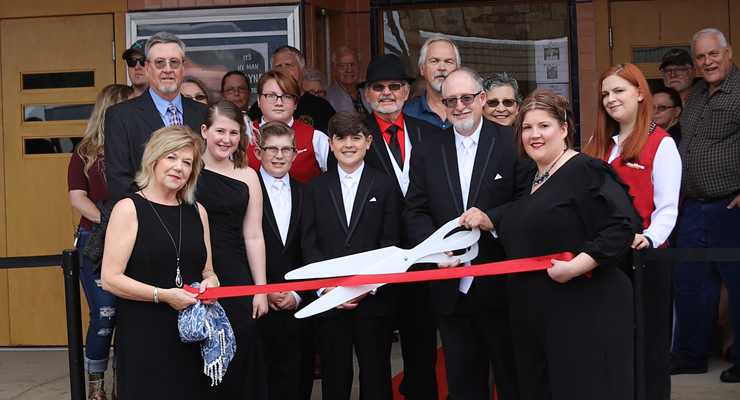
Great music, great food, and a great time marked the opening gala of the Mulkey Theatre Saturday night, May 25.
Thunderstorms and downpours stopped a few ticketholders from attending the event, but a large crowd still braved the elements and turned out to enjoy an evening of entertainment.
A red carpet awaited those arriving after they had their photos taken in front of a custom Mulkey backdrop at the Visitor Center office. Once inside the newly renovated 1946 theatre, a feast was available in front of the new Mulkey stage and in the balcony with food expertly prepared by Great Western Dining and beverages provided by the Broken Road liquor store and the Chamber of Commerce.
Click here for photos of the Gala Opening.
The threat of severe weather in the Panhandle area caused performers from the musical drama “TEXAS” to cancel their scheduled appearance, but organizers quickly adapted the program and proceeded with the Mulkey festivities.
Howardwick residents and stars of the PBS series “Two For The Road” Dusty and Nikki Green served as masters of ceremonies for the evening and welcomed the crowd, and Clarendon Economic Development Corporation Secretary Roger Estlack thanked those who had helped the Mulkey project through the years.
Live entertainment was provided for the evening by the South Plains Dance Orchestra, a 16-piece big band that performed several selections from the World War II era and up through 1946, the year the Mulkey opened. The band also performed a Bob Wills tune in honor of his roots in this area. The acoustics of the renovated auditorium were praised by those attending.
As storms continued to flare up outside, power to the town – and consequently the theatre – went out briefly at least three times, but that never stopped the performance on the stage. Emergency lights kicked in immediately, and the band never missed a single beat. The show went on.
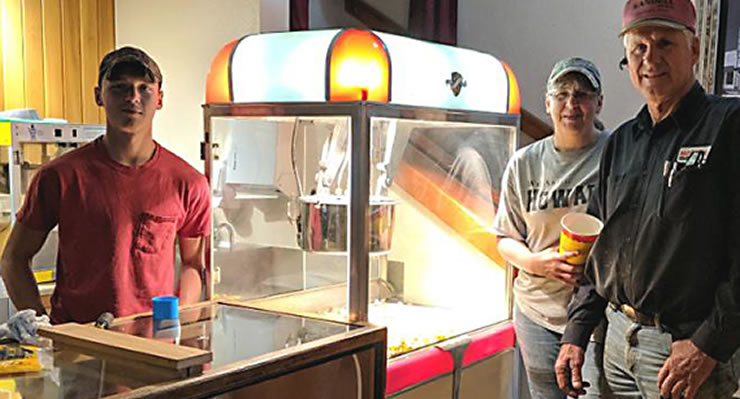
Following an intermission and the clearing of the stage, the big screen was lowered and an updated version of the Greens’ documentary, “Cinema City: The Mulkey & Clarendon,” featuring interviews with Bob Bell, the son of Lema Mulkey’s business manager Lee Bell; former Mulkey projectionist John Molder; Don and Maxine Robinson – who had their first date at the Mulkey; and the late Jean Stavenhagen. Updated footage included a time-lapse video of the installation of the seats in the theater and a dedication to Stavenhagen at the end of the video.
The audience also got to enjoy the premier of the trailer for the third season of “Two For The Road,” getting a glimpse of the Greens’ latest world travels displayed larger than life on the Mulkey screen.
A second intermission sent the audience back to the lobby for Cokes and popcorn before the feature presentation. Back in its original location, the Mulkey’s 1946 popcorn machine was serving its intended purpose after a week-long restoration at the hands of Sandell Drive-In owner John Morrow. The machine has been put on permanent loan to the Mulkey by Vicky and Chuck Robertson in memory of Patrick Robertson.
The first feature film in the new Mulkey was John Wayne and Claudette Colbert in the 1946 “Without Reservations.”
The Mulkey’s grand re-opening continued on Sunday and Monday with free matinees at 2 p.m. and 5 p.m. “Grease” was followed by “The Majestic” on Sunday, and “Despicable Me” was followed by “The Cowboys” on Monday afternoon.
Mulkey organizers will be off this week but plan to begin showing new movies next Friday, June 7. Showtimes and movie selections will be posted at ClarendonTX.com/Mulkey and on Facebook.com/mulkeytheatre.

 A total of 23 individual garage sales are scheduled to be held. A complete description of each sale is printed on the official Treasure Map located on the last page of this week’s Enterprise.
A total of 23 individual garage sales are scheduled to be held. A complete description of each sale is printed on the official Treasure Map located on the last page of this week’s Enterprise.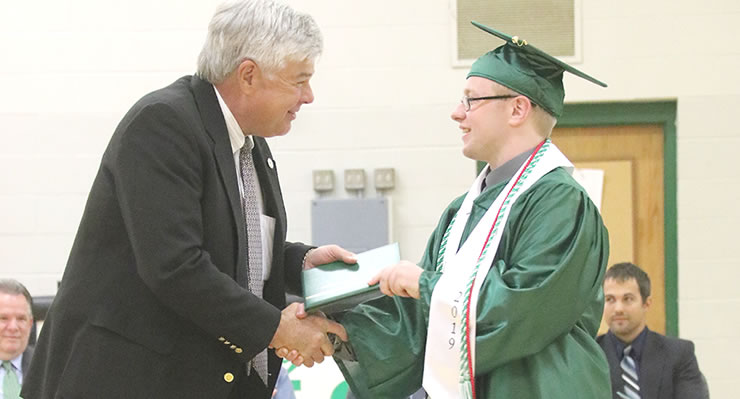
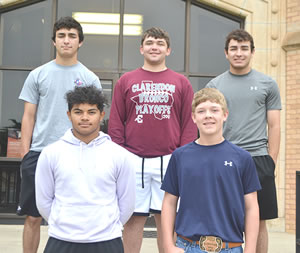

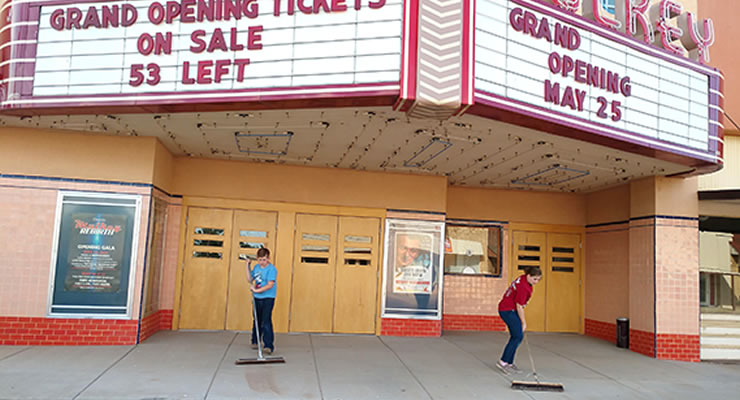



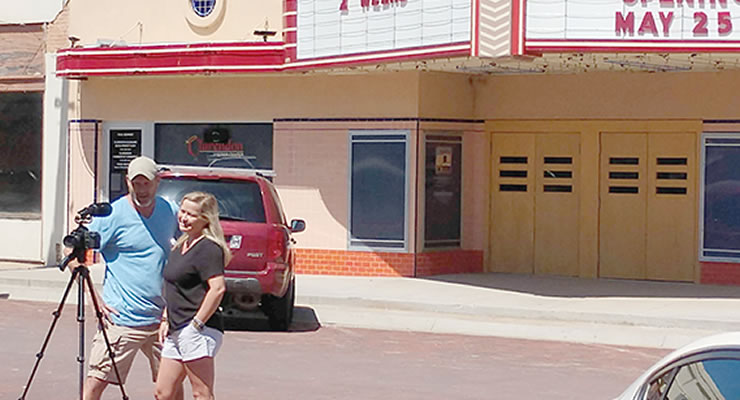

Reader Comments